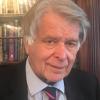This article outlines the top ten benefits of hormone replacement therapy for alleviating the symptoms of the menopause including the prevention of hot flushes and heart attacks.
Contents
- HRT will stop your hot flushes and sweats
- Oestrogens will treat vaginal dryness and many causes of painful intercourse and lack of libido
- HRT increases the bone density and prevents osteoporotic fractures
- HRT protects the intervertebral discs
- HRT does reduce the number of heart attacks
- Oestrogens help depression in many women
- HRT improves libido
- HRT improves the texture of the skin
- "I am a nicer person to live with"
- HRT is safe
1. HRT will stop your hot flushes and sweats
Troublesome hot flushes and severe night sweats that can cause chronic insomnia are characteristic symptoms of the menopause. They may last for years and apart from being socially embarrassing they result in tiredness because of lack of sleep as well as depression. These symptoms can be cured with the correct dose of oestrogen. No other treatment is nearly as effective.
2. Oestrogens will treat vaginal dryness and many causes of painful intercourse and lack of libido
Thinning of the vaginal skin producing vaginal dryness is another characteristic sign of oestrogen deficiency that occurs after the menopause. This also can be successfully treated with oestrogen either by tablets, or through the skin by patches or gels or implants. Going through the skin is probably the safest and most effective route. Oestrogens can also be given for this symptom by local vaginal applications of a weak oestrogen that is not absorbed. Other related problems of painful intercourse, loss of libido are, depending upon the cause, also effectively treated by oestrogens.
3. HRT increases the bone density and prevents osteoporotic fractures
Every study confirms that oestrogens are the most effective way of increasing bone density and this treatment is certainly very safe when started in women under the age of 60. It is much more effective and beneficial than the bisphosphonates frequently used by bone physicians and general practitioners. These non-hormonal drugs with their considerable long term complications have no place in maintaining bone density in women under the age of 60. For younger women receiving oestrogen therapy for flushes, sweats or vaginal dryness there will be a considerable increase in bone density over the years to such an extent that osteoporotic fractures 20 years later are much less likely to occur. For women who have low bone density, even without typical menopausal symptoms, oestrogens must be seen as first choice therapy.
4. HRT protects the intervertebral discs
The oestrogens prevent the collagen being lost from the intervertebral discs. These discs make up one quarter of the length of the spinal cord and act as cushions preventing crush fractures of the vertebral bones. It is these crush fractures that result in loss of height and of the bending forward of the upper spine known as a Dowager’s hump. This important protective effect of oestrogens seems to be unique as bisphosphonates and the other non hormonal treatments of low bone density do not have any affect upon the discs.
5. HRT does reduce the number of heart attacks
There is about 30 years of evidence from many observational trials showing that oestrogens reduce the problems of coronary disease and heart attacks. This has subsequently been questioned by the 2002 Women’s Health Initiative (WHI) study which showed an increase in heart attacks. However, this study looked at the wrong aged patients, using the wrong dose and subsequent reports from the same investigators showed a very much reduced incidence of heart attacks in women who start HRT below the age of 60. This is particularly so in women who have had a hysterectomy and can have oestrogens without progestogen. The view now is that HRT particularly oestrogen alone is very safe and very beneficial if started below the age of 60.
6. Oestrogens help depression in many women
There is no doubt that depression is helped in post menopausal women who have been suffering from night sweats, insomnia or vaginal dryness, painful intercourse and marital problems. However, the most impressive effect on mood is seen in younger perimenopausal women in the two or three years before the periods cease. This is known as the menopausal transition period. Such depression often occurs in women who previously have had post natal depression and premenstrual depression. As premenstrual depression becomes worse with age it blends with the more severe depression of the transition phase but is very effectively treated by oestrogens through the skin i.e. transdermal therapy.
7. HRT improves libido
HRT certainly improves libido if oestrogens are used to cure vaginal dryness and painful intercourse. However, if necessary, the addition of testosterone has an even more dramatic effect upon libido, frequency of intercourse and intensity of orgasm. Women must be aware that testosterone is not a male hormone. It is an essential female hormone that is present, in women, in 10 times the blood levels as is oestrogen. It is an essential hormone, important for energy, mood and sexuality in women and is particularly needed in women who have had a hysterectomy with loss of ovaries and ovarian androgens
8. HRT improves the texture of the skin
After the menopause, women lose about 25% of their body collagen which are manifested by thin inelastic skin, brittle nails, loss of hair and loss of the collagenous bone matrix. This latter loss is an essential cause of osteoporosis and osteoporotic fractures. Oestrogen therapy replaces the lost collagen in the skin and the bone and nails. Its effect on the skin of the face is a very obvious useful cosmetic effect.
9. “I am a nicer person to live with”
Many women say that when oestrogen therapy stops their depression, their loss of libido and their irritability, they become nicer people for their partners to live with. The depression, grumpiness and loss of energy can usually be improved considerably by the appropriate doses of the appropriate hormones. This may be testosterone as well as oestrogen.
10. HRT is safe
In spite of the press reports stressing bad news, virtually all of the major side effects from the WHI study have been withdrawn even by the investigators. It seems quite clear that the major side effects occurred in women who started the wrong dose of HRT over the age of 60. In women who started below the age of 60 there were fewer heart attacks, fewer deaths, fewer osteoporotic fractures and even less breast cancer. The one residual side effect is that there probably is a very slight i.e. 1% extra lifetime risk of developing breast cancer but this is no more than the breast cancer risk of being overweight, drinking wine, having no children or even taking statins.
For further information on the author of this article, Consultant Gynaecologist, Professor John Studd, please click here.
The time of a woman’s life when her ovaries stop releasing an egg (ovum) on a monthly cycle, and her periods cease
Full medical glossary







